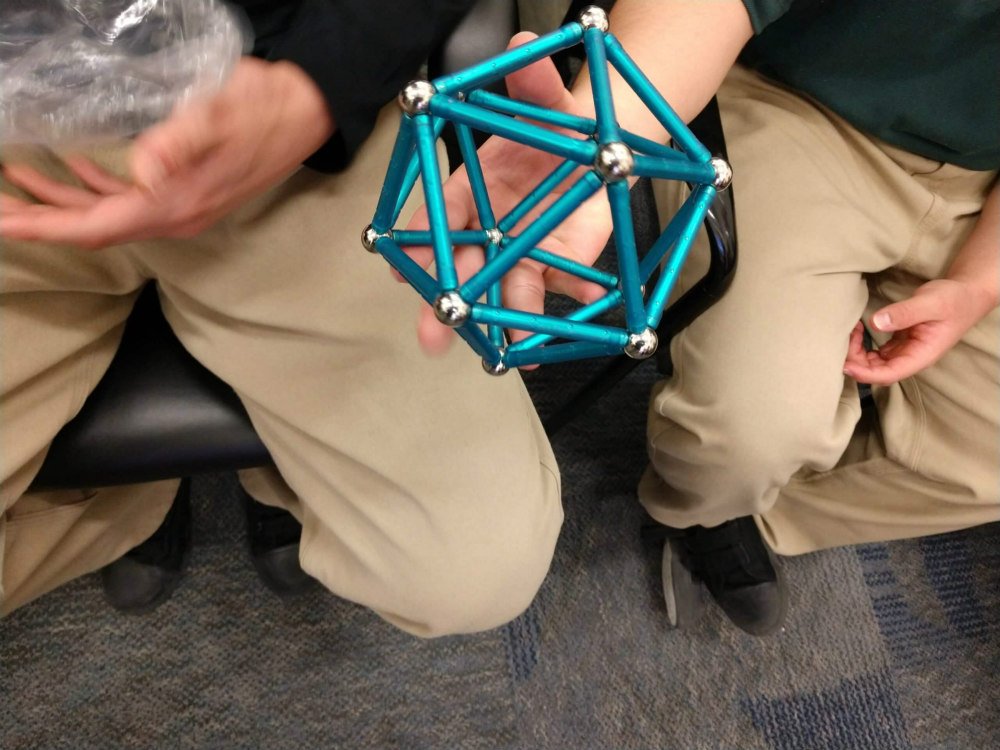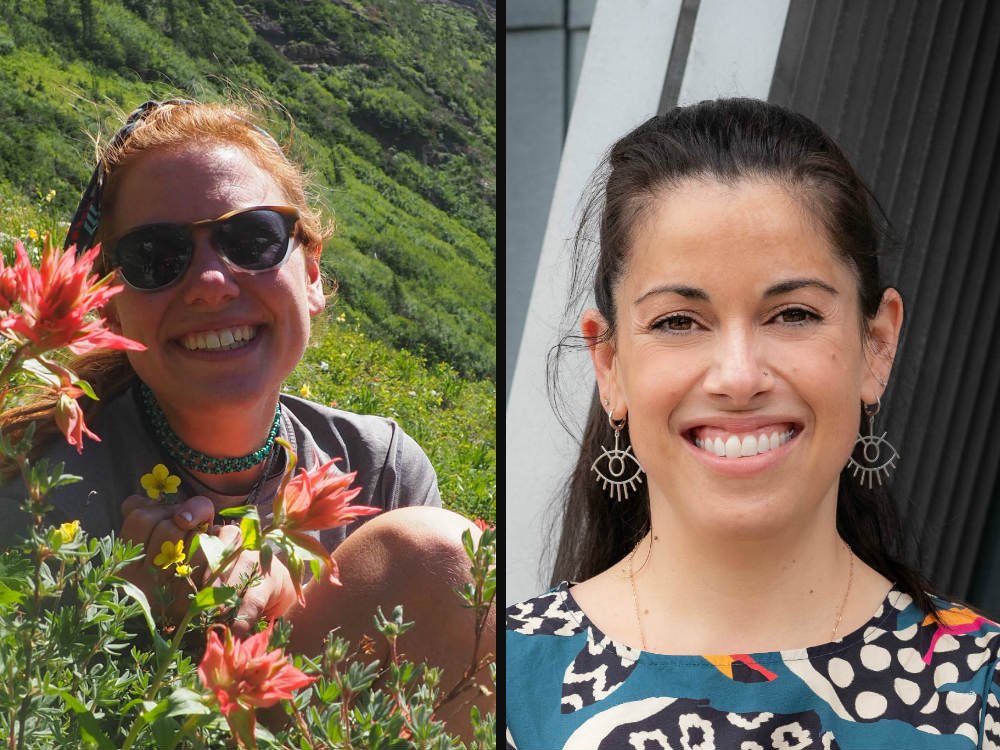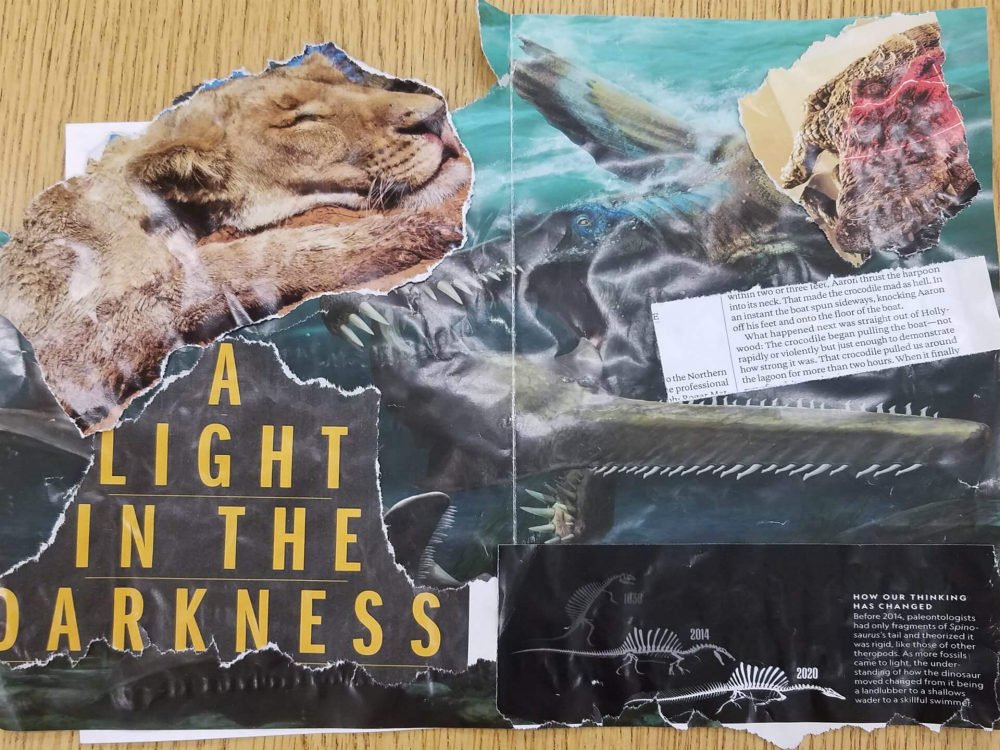Science, art and museums! Connecting youth in custody with academics
How award-winning women in science and art have created a restorative platform for youth in custody through access to museums.
Nalini Nadkarni is an award-winning canopy ecologist whose work in rainforests has earned international acclaim. She is also a champion of outreach beyond the ivory tower. Since 2003, Nadkarni has created and directed informal science education programs in prisons. Her initiatives extend from western Washington to the panhandle of Florida, offering environmental science classes to inmates, bringing nature imagery to men in solitary confinement, and supporting hands-on ecological conservation projects for incarcerated men and women who would otherwise have little access to nature.
In 2017, Utah’s Board of Education began exploring whether similar programs might help young adults in long-term juvenile detention facilities. That year, an administrator reached out to Nadkarni requesting help to improve science education for students in the juvenile justice system. Incarcerated youth are entitled by law to an education. Before long, Nadkarni was building an extraordinary set of partnerships across Salt Lake City to support youth in custody. The result was the STEM Community Alliance Program (STEMCAP).
Today, STEMCAP partners include the Utah Museum of Fine Arts (UMFA), the Salt Lake County Library, the Clark Planetarium, University of Utah faculty, artists, and museums of natural history. Through education programs youth in custody create ecologically-themed works of art which will hang in Utah’s leading fine art museum. They contribute to environmental restoration projects, raising milkweed seedlings to support monarch butterflies that migrate through damaged areas of Salt Lake City’s landscape. They plant seeds from the Salt Lake City Seed Library, and they harvest the next generation of seeds to make plants available to others.
Through STEMCAP’s Objects from Nature curricula, incarcerated students meet with scientists from natural history museums at the detention facilities, getting the chance to see and handle objects from private collections, learning how museums acquire their specimens. In addition, the Art and Science program invites local artists to engage students in music, dance, theater, photography, poetry, and more, applying scientific principles in creative ways. Last year, during the height of the pandemic, over 80 workshops in 15 fields of study reached Utah students in custody, even during global lockdown.
Nadkarni believes effective science education must include diverse ways of knowing and hands-on experiences like these. By offering youth in custody the chance to build relationships with scientists and artists, STEMCAP aims at inspiring excitement among all types of learners. That includes students who might initially shy away from science or math, and who may find art or poetry more approachable.
Annie Burbidge Ream, the Co-Director of Learning and Engagement at the Utah Museum of Fine Arts (UMFA) and a state and national award-winning arts educator, is a key STEMCAP partner. In 2019 when the UMFA launched plans for an environmental humanities exhibit, a colleague at the University of Utah introduced Burbidge Ream to Nadkarni and to STEMCAP’s Program Manager, Laura George. The UMFA was planning an exhibit about art and pollution called AIR, and they needed a scientist consultant. Nadkarni and George wanted to expand art access for incarcerated youth. All three women recognized right away that their areas of expertise would lead to an extraordinary partnership.
Not long after that first meeting, though, the pandemic made the possibility of in-person programming impossible. Undaunted, STEMCAP and the UMFA launched virtual museum tours. The collaboration meant youth-in-custody were able to “visit” museum exhibits focusing on environmental issues. Their first digital tour of 2020 was called Zooming into Art. Its success prompted the UMFA to expand the platform into other classrooms too. Today it has hosted virtual tours for nearly 9,000 students and teachers.
”Art is for everyone”, says Burbidge Ream.
Burbidge Ream points out the importance of museums as community spaces for everyone. Similarly, George emphasizes the role art museums play in communicating about scientific and environmental issues and building self-esteem among youth in custody.
In that context, the UMFA led a STEMCAP workshop last February about one of Utah’s most iconic sculptures, Spiral Jetty. Long before the phrase “climate change” had become common, the artist Robert Smithson used over six thousand tons of black basalt and earth to build a coil, winding into Great Salt Lake, 1,500 feet long and 15 feet wide. Today, Spiral Jetty has become a profound sculptural marker of environmental transformation as the lake’s waters flood and recede. UMFA partners with the Dia Art Foundation and Great Salt Lake Institute at Westminster College for the Jetty’s protection.
Burbidge Ream says STEMCAP students showed up to the first Spiral Jetty lecture at Decker Lake Youth Center bursting with questions about the construction and about the ethics of using public funds on stewardship of “rocks rather than social problems.” The workshop focused on how both the lake and the Spiral Jetty can depict changes in the environment. Afterwards, students discussed entropy and climate change, then moved to a hands-on art-making exercise where they integrated new understandings.
Nadkarni highlights the importance of partnerships in every conversation, and that partnership includes students, themselves.“Youth in custody are not often asked for their opinion,” Nadkarni points out. “One of the things we do is to build in the opportunity for student responses,” she says, “asking, ‘What do you think about these issues? What do you suggest?’”.
Students within the STEMCAP program have created podcasts about biodiversity, written letters to environmental non-profits, and recently, the University of Utah paired STEMCAP students with undergraduates in a University of Utah environmental study class. Taking care to preserve students’ anonymity, the program creates a two-way street of letter-writing about ecological issues, classroom-to-classroom.
“Interactions like these matter deeply to students in custody. Knowing that other people are seeing their writing, their poems, it makes them excited that people care about what they have to say,” says George.
Cynthia Checketts, an educator with Salt Lake City’s Clark Planetarium agrees. “Kids developing this love for science really need a lot of care,” she points out. She describes STEMCAP’s students as some of the most engaged she has worked with. “It just felt phenomenal,” she says of her experience with STEMCAP.
Back in 2017, a series of reforms aimed to reduce the number of Utah youth in custody, but profound racial inequalities persist. A recent report from The Sentencing Project showed a criminal justice system rife with racial and ethnic disparities, and declines in detention were no exception. The report stated, “racial and ethnic disparities, already large at initial contact with law enforcement, generally grow at each point of contact with the rest of the justice system” in the United States. Last summer, a study by Voices for Utah Children noted indigenous youth were sent to detention centers at three times their expected representation, and Black children represented nearly 12% of all “secure care placements” — even though they were only 1.4% of the school-aged population in Utah. Similarly, a survey by the Annie E. Casey Foundation noted a widening gap between release rates for African American youth and whites nation-wide. During the pandemic, that gap in release rates nearly doubled.
Against this backdrop, STEMCAP’s model extended Nadkarni’s earlier work, emphasizing the importance and value of science education beyond racial and gender stereotypes, expanding public understanding of what a scientist looks like and forging connections between artists, conservationists and incarcerated youth.
Today, STEMCAP brings programs to almost 450 students in five juvenile justice centers, where educators help incarcerated students identify themselves as science-capable learners, showcasing ways they contribute to their communities. When Salt Lake City residents come across signs on local bike paths next to growing plants – like the Jordan River Parkway Trail, for example – those signs highlight actions that students in custody at the Decker Lake Youth Center took to restore monarch habitats. Alongside the plants, Nadkarni sees opportunities for empathy and understanding to grow too.
Nadkarni emphasizes the interwoven relationships between students and educators, much like relationships between species in the natural world. When scientists and artists learn about the correctional system, Nadkarni says, it promotes greater awareness and activism, including direct advocacy, participation in broader movements, support for prison education initiatives and prison reform.
As institutions across Salt Lake City gradually reopen, plans are underway for the AIR Exhibit to launch in person at the UMFA. When it does, works of art that STEMCAP students created will be on display. Some are already online on the UMFA. It’s all part of the museum’s commitment to community engagement, says Burbidge Ream. In addition to its environmental focus, the AIR Exhibit will demonstrate that the creative work of students in custody is equally as valuable as art by students in any other setting.
Currently STEMCAP is creating tools to help others replicate the programs they have pioneered. A “How To” Manual will be available on the STEMCAP website soon, offering guidance and strategies to make science education effective, respectful and impactful.
Nadkarni acknowledges that education partnerships with museums will not, by themselves, solve deep, historical and persistent injustices in correctional institutional settings, but hopes programs like these create better opportunities for youth. She says she learns every day from STEMCAP partners. “She’s such a force,” George says of Nadkarni. “She has these amazing ideas that make other people think, ‘Oh, that’s not possible.’ And then she just says, ‘We can make it happen.’”
This article is part of a series on museums and cultural institutions in partnership with The Urban Activist.
Author: Michelle Frank








